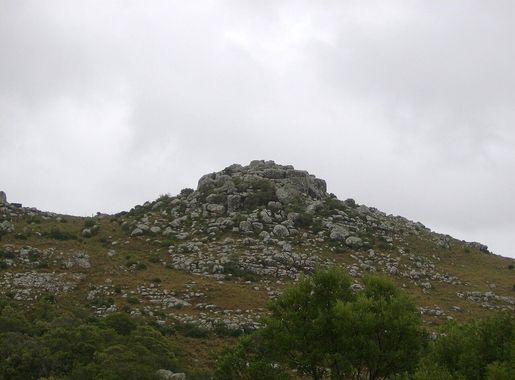
The Enchanting Sierras de Carapé: Uruguay's Hidden Gem
Explore the Sierras de Carapé, Uruguay’s hidden gem offering stunning landscapes, rich culture, and outdoor adventures in the heart of the Cuchilla Grande range.
Nestled in the heart of Uruguay, the Sierras de Carapé offers a serene escape for nature lovers and adventure seekers alike. This mountainous region, part of the larger Cuchilla Grande range, is known for its rolling hills, lush greenery, and breathtaking vistas. The highest peak, Cerro Catedral, stands at 513 meters above sea level, providing panoramic views of the surrounding landscape. The Sierras de Carapé is a haven for hiking enthusiasts. With numerous trails winding through the scenic terrain, visitors can enjoy a variety of outdoor activities. Whether you're interested in a leisurely walk or a challenging trek, the area has something for everyone. Along the way, you'll have the chance to spot local wildlife, including a variety of birds and small mammals that inhabit the region. For those interested in the cultural aspect, the Sierras de Carapé also offer a glimpse into rural Uruguayan life. Small villages and farms dot the landscape, where you can experience local traditions and hospitality. The region's history is rich, and many of the locals are eager to share stories and legends about their homeland. Whether you're looking to relax in nature or embark on an adventure, the Sierras de Carapé is a destination that promises unforgettable experiences. Its unspoiled beauty and tranquil ambiance make it a perfect getaway for anyone looking to escape the hustle and bustle of everyday life.
Local tips in Sierras de Carapé
- Wear sturdy hiking boots as the trails can be rocky and uneven.
- Bring a refillable water bottle; there are few places to purchase water in the area.
- Visit during spring or fall for the most pleasant weather and vibrant scenery.
- Learn a few basic Spanish phrases to communicate with locals, as English is not widely spoken.
- Pack a picnic and enjoy a meal with a view from one of the many scenic spots.
The Enchanting Sierras de Carapé: Uruguay's Hidden Gem
Nestled in the heart of Uruguay, the Sierras de Carapé offers a serene escape for nature lovers and adventure seekers alike. This mountainous region, part of the larger Cuchilla Grande range, is known for its rolling hills, lush greenery, and breathtaking vistas. The highest peak, Cerro Catedral, stands at 513 meters above sea level, providing panoramic views of the surrounding landscape. The Sierras de Carapé is a haven for hiking enthusiasts. With numerous trails winding through the scenic terrain, visitors can enjoy a variety of outdoor activities. Whether you're interested in a leisurely walk or a challenging trek, the area has something for everyone. Along the way, you'll have the chance to spot local wildlife, including a variety of birds and small mammals that inhabit the region. For those interested in the cultural aspect, the Sierras de Carapé also offer a glimpse into rural Uruguayan life. Small villages and farms dot the landscape, where you can experience local traditions and hospitality. The region's history is rich, and many of the locals are eager to share stories and legends about their homeland. Whether you're looking to relax in nature or embark on an adventure, the Sierras de Carapé is a destination that promises unforgettable experiences. Its unspoiled beauty and tranquil ambiance make it a perfect getaway for anyone looking to escape the hustle and bustle of everyday life.
When is the best time to go to Sierras de Carapé?
Unmissable attractions to see
Ose Park
Experience the natural beauty and tranquility of Ose Park in Minas, Uruguay. A perfect retreat for nature lovers and families alike.

Municipal Grutas De Salamanca Park
Explore the breathtaking caves and adventure opportunities at Municipal Grutas De Salamanca Park, a natural wonder in Maldonado, Uruguay.
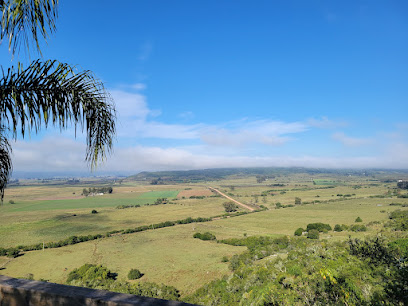
Ruben Darío Olivera Park
Discover tranquility at Ruben Darío Olivera Park in Aiguá, a natural retreat filled with lush greenery and family-friendly areas.
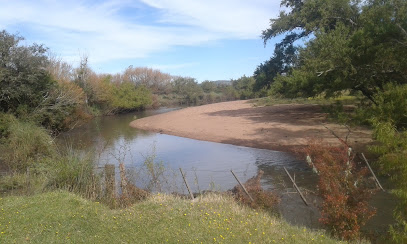
Old Windmill Museum
Explore the rich history and culture of Minas at the Old Windmill Museum, a unique attraction housed in a charming windmill.
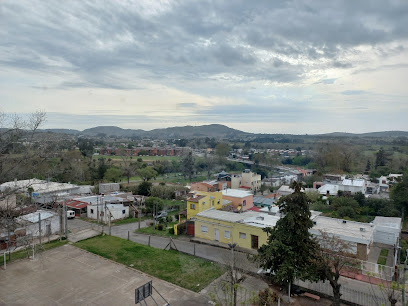
Espacio Tao
Experience the tranquil beauty of Espacio Tao, a nature preserve in Aiguá offering immersive farm tours and serene accommodations in Uruguay's picturesque landscapes.
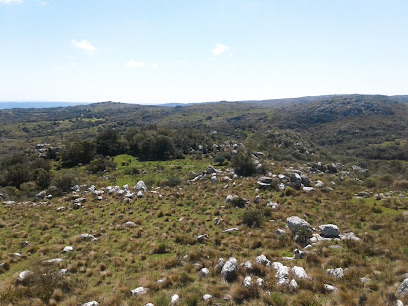
Mirador al valle (grutas de Salamanca)
Discover the breathtaking vistas of Mirador al Valle in Uruguay's Grutas de Salamanca, a perfect blend of nature and tranquility.
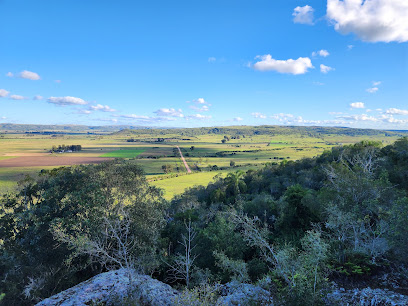
Cerro El Minuano
Discover the breathtaking beauty of Cerro El Minuano: a premier hiking destination in Maldonado, Uruguay, perfect for nature lovers and adventure seekers.
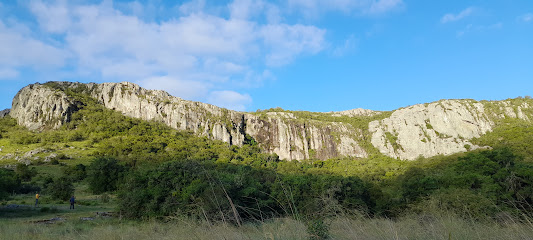
Cerro del Mástil
Explore the breathtaking views and serene landscapes of Cerro del Mástil in Lavalleja, a must-visit natural attraction for all tourists.

Sierra Carapé
Explore the stunning natural beauty of Sierra Carapé, a breathtaking mountain range in Maldonado Department, perfect for outdoor enthusiasts and nature lovers.
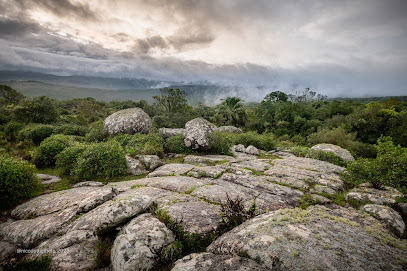
Más Yerba
Explore Más Yerba in Aiguá, a serene tourist attraction offering a glimpse into local culture and stunning natural beauty in the heart of Uruguay.
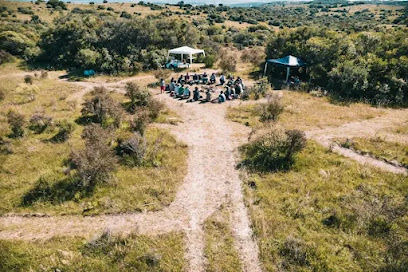
Cumbre de los Reyes
Discover the breathtaking views and serene beauty of Cumbre de los Reyes, a stunning summit in Villa Serrana, Uruguay, perfect for nature lovers.
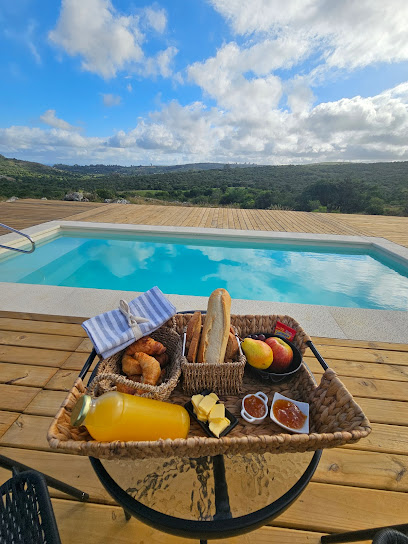
HOOVER OLIVOS
Explore the serene beauty and tranquility of Hoover Olivos in Maldonado, Uruguay, a perfect retreat for nature lovers and seeking relaxation.

Cerro Barbosa por qué hay una cruz
Discover the serene beauty of Cerro Barbosa, a picturesque park in Aiguá, Maldonado, featuring stunning views and a historic cross.
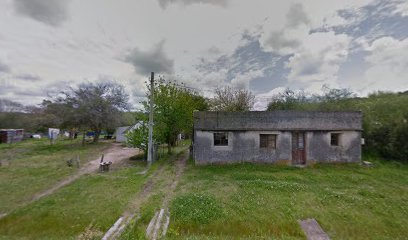
Colinas del Edén
Explore the serene beauty of Colinas del Edén in Uruguay's Maldonado Department, an idyllic destination for nature lovers and tranquility seekers.
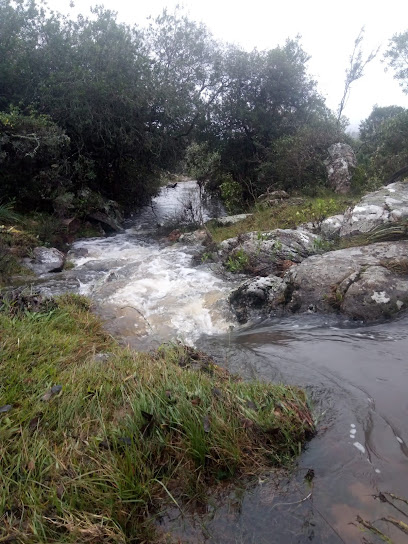
Barrancas Altas
Experience the breathtaking beauty of Barrancas Altas, a stunning natural attraction in Maldonado, perfect for adventure seekers and nature lovers.

Essential places to dine
Ventorrillo de la Buena Vista
Discover culinary delights at Ventorrillo de la Buena Vista – an American restaurant nestled in Villa Serrana's stunning landscapes.

Mesón de Las Cañas
Experience authentic Uruguayan cuisine at Mesón de Las Cañas, where tradition meets flavor in the heart of Villa Serrana.
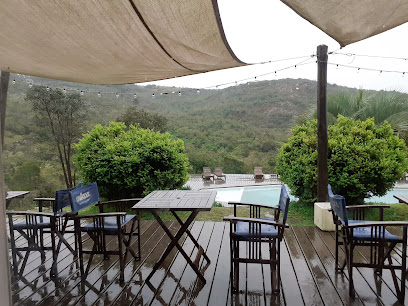
La Mia Cucina
Experience the best of Italian and Indian cuisine at La Mia Cucina in Villa Serrana, where flavor meets tranquility.
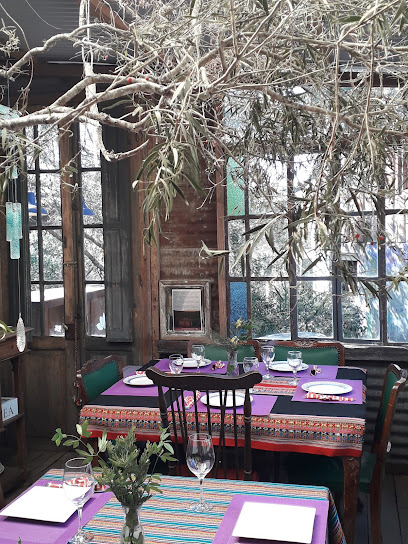
Parador La Casona
Discover authentic Uruguayan cuisine in a charming setting at Parador La Casona, where every meal is a celebration of local flavors.
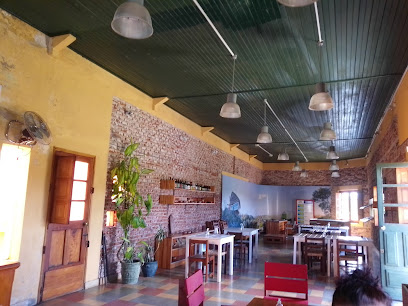
La Cantina del Santuario
Discover authentic Uruguayan cuisine at La Cantina del Santuario in Villa Serrana – a perfect blend of nature and flavor awaits you.
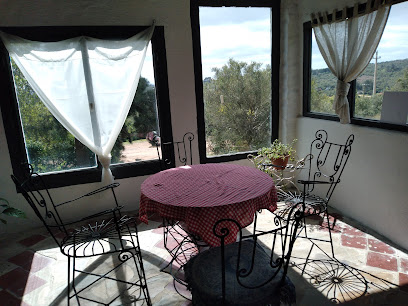
Tu pedacito de cielo
Discover Tu Pedacito de Cielo: A gastropub in Minas offering exquisite local cuisine amidst stunning natural beauty.

Restaurante del Penitente
Experience authentic Uruguayan cuisine amidst stunning landscapes at Restaurante del Penitente in Villa Serrana.
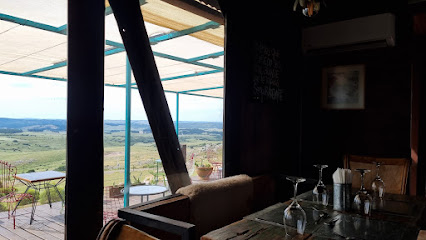
Restaurante La Calaguala
Experience traditional American cuisine amidst the stunning natural beauty of Villa Serrana at Restaurante La Calaguala.
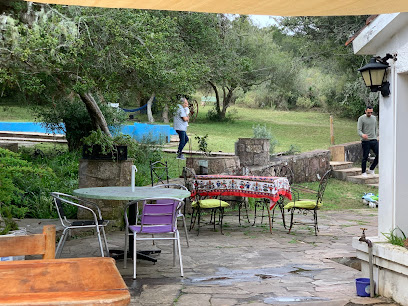
Markets, malls and hidden boutiques
Sabores De Las Sierras
Savor the sweetness of Uruguay at Sabores De Las Sierras, a delightful patisserie offering exquisite pastries in a charming atmosphere.
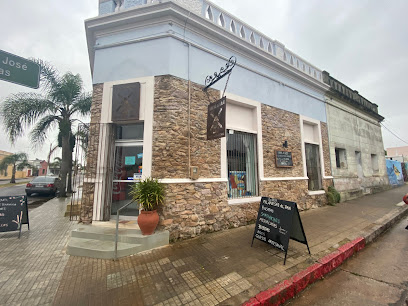
Canoa Quebrada
Explore Canoa Quebrada, the ultimate gift shop in Punta del Este for unique souvenirs and local crafts that capture the spirit of Uruguay.
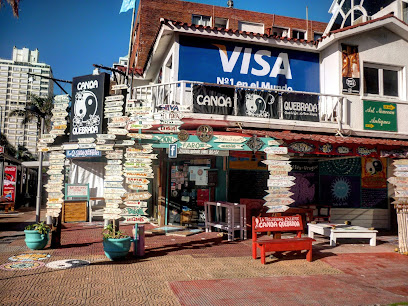
Almacén Garzón
Discover the rich flavors of Uruguay at Almacén Garzón, a grocery store offering local produce, artisanal goods, and a taste of authentic culinary heritage.
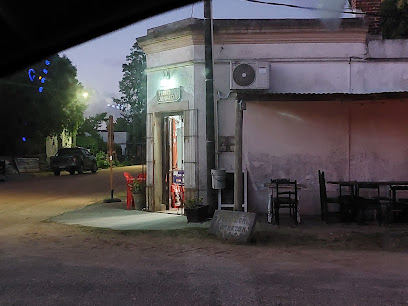
Panaderia
Explore the vibrant flavors of Aiguá at Panaderia, where fresh baked goods and local products await every visitor.
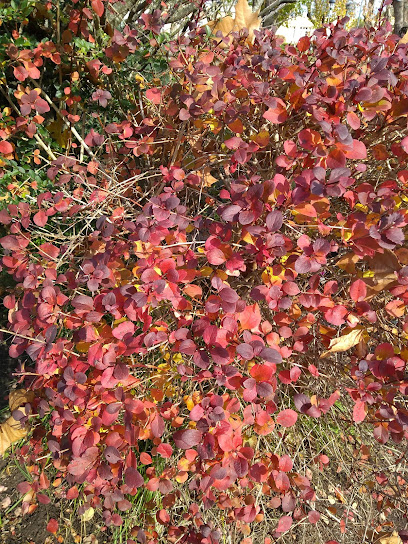
Luly Crea Para Ti
Discover unique handcrafted gifts that embody the spirit of Rocha at Luly Crea Para Ti, where local artistry meets unforgettable souvenirs.
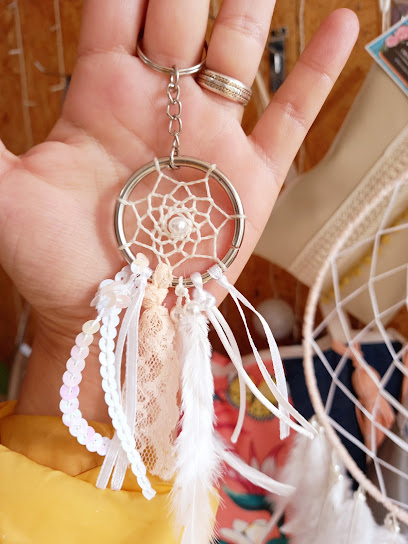
Quincho Saravia
Experience the best of Uruguayan flavors at Quincho Saravia, your go-to supermarket in Maldonado for fresh produce and local delicacies.
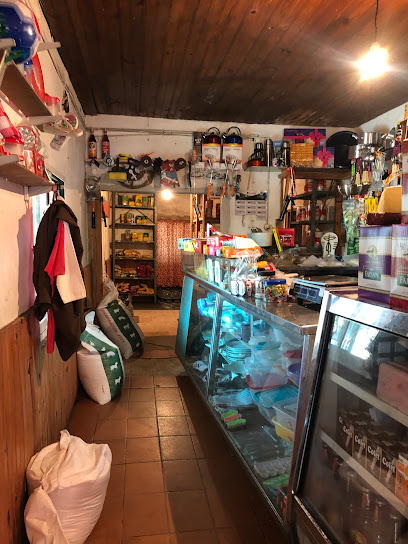
DN TIENDA
Explore DN TIENDA in Rocha, Uruguay - your ultimate destination for trendy clothing and unique fashion finds.

LaTierra-TallerArtesano
Explore the unique and vibrant artisan products at LaTierra-TallerArtesano in Aiguá, a true reflection of Uruguayan culture and craftsmanship.
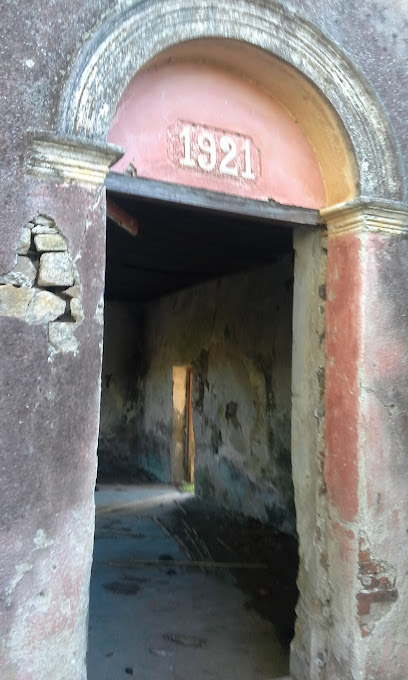
Provisión 5 Esquinas
Explore Provisión 5 Esquinas in Aiguá for local goods, unique souvenirs, and a taste of Uruguayan culture.
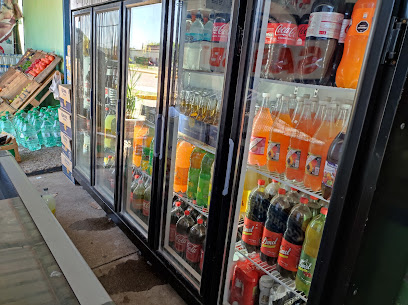
Almacén de LETICIA PÉREZ
Explore local flavors and community spirit at Almacén de LETICIA PÉREZ, the ideal grocery store for tourists in Aiguá, Maldonado, Uruguay.
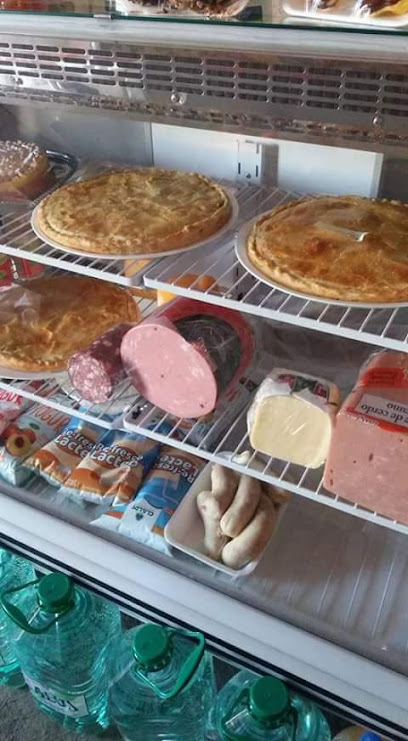
Sierra Carapé
Explore Sierra Carapé: A breathtaking mountain range in Uruguay offering stunning views and outdoor adventures in the heart of nature.
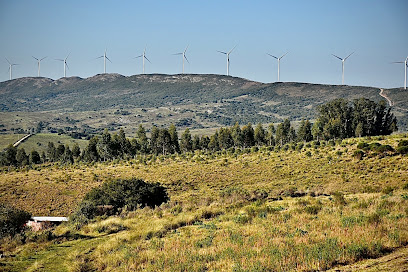
Tramma Bambú
Discover Tramma Bambú in Aiguá for a stylish selection of high-quality underwear that combines comfort and elegance during your travels.

Artesanías Garzón
Explore the unique artisan crafts of Uruguay at Artesanías Garzón, where every piece tells a story and supports local craftsmanship.
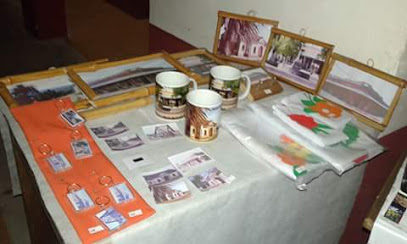
Regalos Del Valle. Tienda De Artesanias Y Productos Locales
Explore Regalos Del Valle in Aiguá for unique local crafts and clothing that reflect the heart of Uruguay's artisanship.
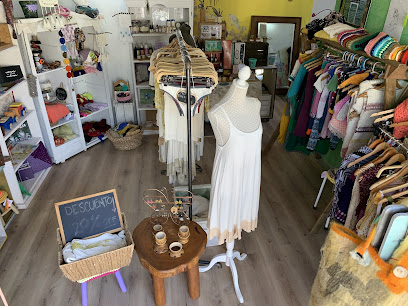
Local Agropecuaria de Aiguá
Discover the vibrant flavors of Uruguay at Local Agropecuaria de Aiguá, a grocery store showcasing the region's rich agricultural heritage.
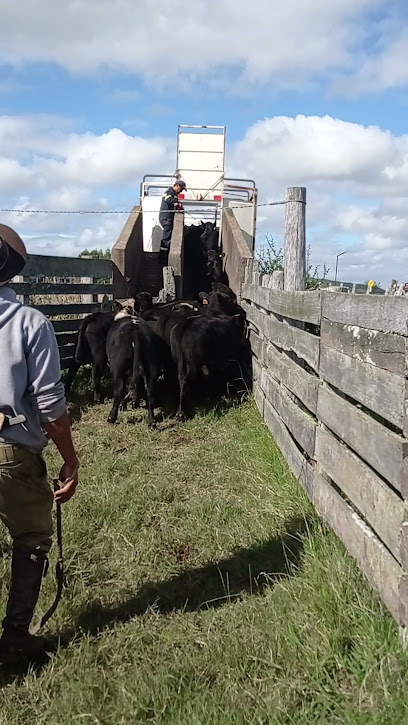
Essential bars & hidden hideouts
Capi Bar
Experience the vibrant atmosphere of Capi Bar in Punta del Este, where craft beers and delicious grilled dishes await in a lively setting.
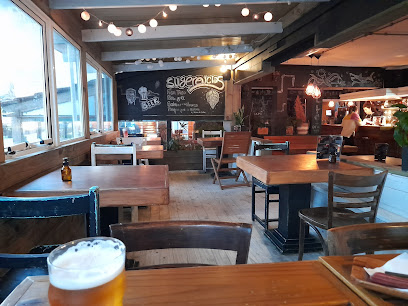
Alligator Bar
Discover the vibrant Alligator Bar in Maldonado, where lively atmosphere meets refreshing drinks for an unforgettable nightlife experience.
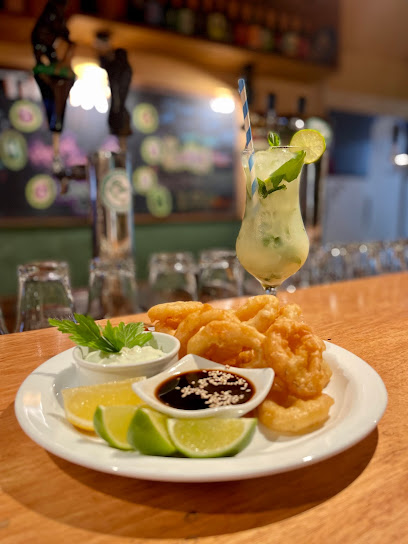
The Bar
Experience authentic Uruguayan grilled cuisine in a vibrant setting at The Bar in Maldonado, where every bite tells a story.

HUMA Rooftop Bar & Lounge
Experience luxury at HUMA Rooftop Bar & Lounge, offering breathtaking views, creative cocktails, and a vibrant atmosphere in Punta del Este.
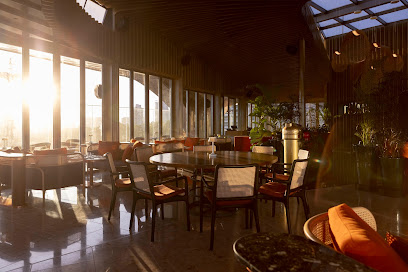
Tu pedacito de cielo
Discover the flavors of Uruguay at Tu Pedacito de Cielo, a charming gastropub in Lavalleja offering a unique culinary experience amidst stunning landscapes.
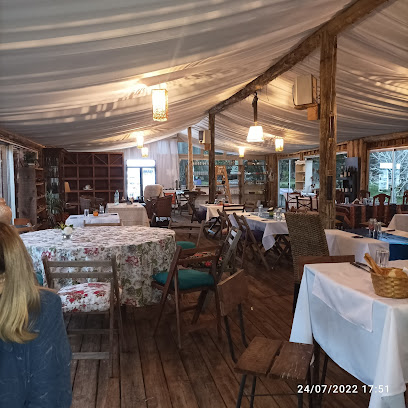
Villla Galicia
Experience the cozy charm of Villa Galicia, where delightful drinks and a welcoming atmosphere await in the heart of Aiguá, Uruguay.
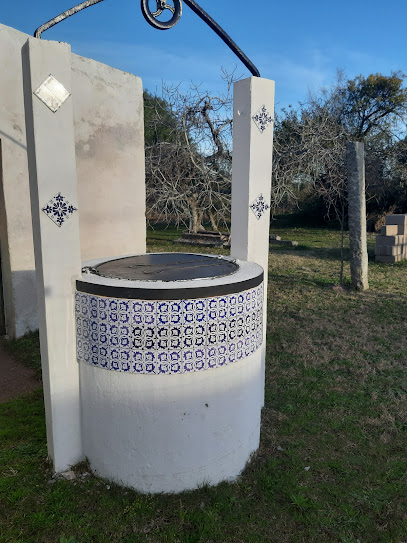
Perla Negra
Discover the vibrant and lively atmosphere at Perla Negra, where delicious drinks and local culture unite in El Tesoro, Maldonado.

Bar del Cachango
Discover the heart of Rocha at Bar del Cachango, where traditional flavors and local culture blend in a lively atmosphere.

Charles Bar
Discover the vibrant atmosphere of Charles Bar in Maldonado, where local spirits and friendly faces create unforgettable memories.
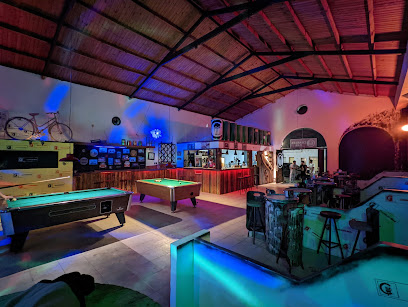
Sierra Carapé
Discover the breathtaking beauty and adventure of Sierra Carapé, a stunning mountain range in Maldonado Department, ideal for nature lovers and adventurers.
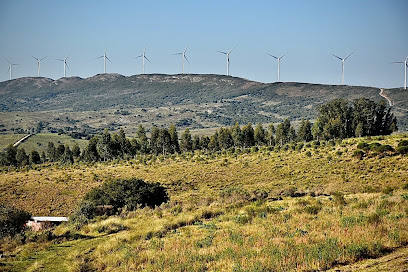
Parador El Quincho
Discover the lively spirit of Maldonado at Parador El Quincho, a vibrant bar offering delicious drinks and a warm atmosphere for unforgettable nights.
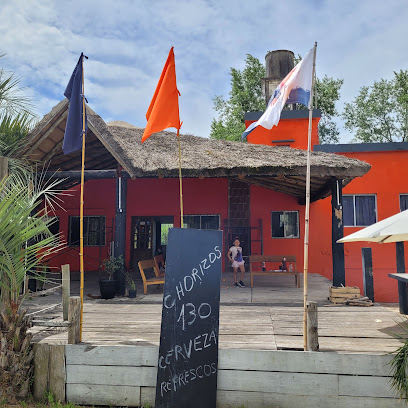
Serendipia Bar
Experience the vibrant culinary scene at Serendipia Bar in La Barra, featuring exquisite tapas and a lively atmosphere to delight your senses.
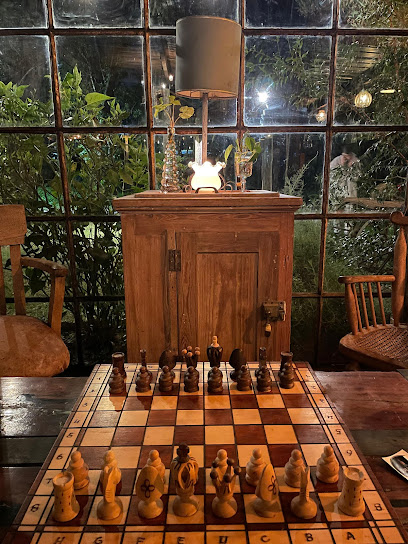
Cancha Chica De Pelota De Mano
Discover the vibrant cultural scene at Cancha Chica De Pelota De Mano, where traditional handball brings the community together in scenic Mariscala.

Despa
Discover the vibrant nightlife at Despa, a cozy bar in El Chorro offering delightful drinks and a unique local experience.
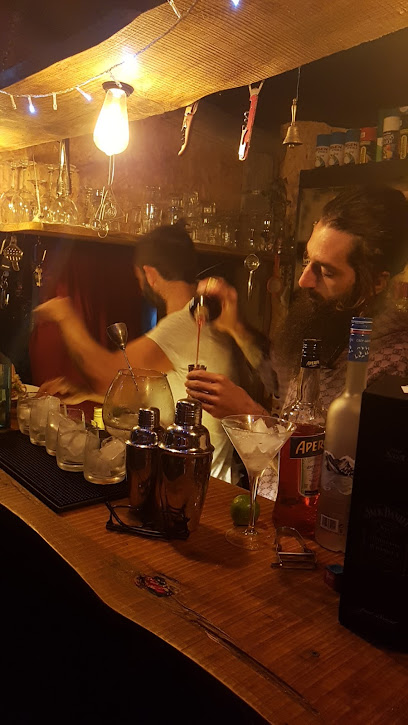
Mala Junta Pub
Discover the lively ambiance of Mala Junta Pub in Minas, Uruguay, where drinks, music, and good company create an unforgettable night out.
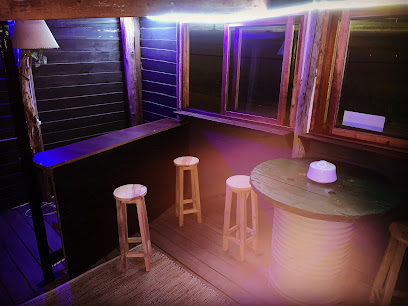
Local Phrases about Sierras de Carapé
-
- HelloHola
[oh-lah] - GoodbyeChau
[chow] - YesSí
[see] - NoNo
[noh] - Please/You're welcomePor favor/De nada
[por fah-bor/de nah-dah] - Thank youGracias
[grah-see-ahs] - Excuse me/SorryDisculpe/Perdón
[dee-skool-peh/pehr-dohn] - How are you?¿Cómo estás?
[koh-moh ehs-tahs] - Fine. And you?Bien. ¿Y tú?
[byen. ee too] - Do you speak English?¿Hablas inglés?
[ah-blahs een-glays] - I don't understandNo entiendo
[noh ehn-tyen-doh]
- HelloHola
-
- I'd like to see the menu, pleaseMe gustaría ver el menú, por favor
[meh goos-tah-ree-ah behr ehl meh-noo, por fah-bor] - I don't eat meatNo como carne
[noh koh-moh kahr-neh] - Cheers!¡Salud!
[sah-loohd] - I would like to pay, pleaseMe gustaría pagar, por favor
[meh goos-tah-ree-ah pah-gahr, por fah-bor]
- I'd like to see the menu, pleaseMe gustaría ver el menú, por favor
-
- Help!¡Ayuda!
[ah-yoo-dah] - Go away!¡Vete!
[veh-teh] - Call the Police!¡Llame a la Policía!
[yah-meh ah lah poh-lee-see-ah] - Call a doctor!¡Llame a un médico!
[yah-meh ah oon meh-dee-koh] - I'm lostEstoy perdido
[ehs-toy pehr-dee-doh] - I'm illEstoy enfermo
[ehs-toy ehn-fehr-moh]
- Help!¡Ayuda!
-
- I'd like to buy...Quisiera comprar...
[kee-see-eh-rah kohm-prahr] - I'm just lookingSolo estoy mirando
[soh-loh ehs-toy mee-rahn-doh] - How much is it?¿Cuánto cuesta?
[kwan-toh kwehs-tah] - That's too expensiveEs muy caro
[ehs moo-ee kah-roh] - Can you lower the price?¿Puede bajar el precio?
[pweh-deh bah-hahr ehl pree-syoh]
- I'd like to buy...Quisiera comprar...
-
- What time is it?¿Qué hora es?
[keh oh-rah ehs] - It's one o'clockEs la una
[ehs lah oo-nah] - Half past (10)Las diez y media
[lahs dyehs ee meh-dee-ah] - MorningMañana
[mah-nyah-nah] - AfternoonTarde
[tahr-deh] - EveningNoche
[noh-cheh] - YesterdayAyer
[ah-yehr] - TodayHoy
[oy] - TomorrowMañana
[mah-nyah-nah] - 1Uno
[oo-noh] - 2Dos
[dohs] - 3Tres
[trehs] - 4Cuatro
[kwah-troh] - 5Cinco
[seen-koh] - 6Seis
[seys] - 7Siete
[syeh-teh] - 8Ocho
[oh-choh] - 9Nueve
[nweh-veh] - 10Diez
[dyehs]
- What time is it?¿Qué hora es?
-
- Where's a/the...?¿Dónde está...?
[dohn-deh ehs-tah] - What's the address?¿Cuál es la dirección?
[kwal ehs lah dee-rehk-syon] - Can you show me (on the map)?¿Puede mostrarme (en el mapa)?
[pweh-deh mohs-trar-meh (ehn ehl mah-pah)] - When's the next (bus)?¿Cuándo es el próximo (ómnibus)?
[kwan-doh ehs ehl proh-ksee-moh (ohm-nee-boos)] - A ticket (to ....)Un boleto (para ....)
[oon boh-leh-toh (pah-rah)]
- Where's a/the...?¿Dónde está...?
History of Sierras de Carapé
-
Long before the arrival of European settlers, the region now known as Sierras de Carapé was inhabited by indigenous tribes, including the Charrúas. These tribes utilized the fertile land and abundant resources of the area to sustain their communities. Archaeological finds in the region reveal tools and artifacts that provide insights into their way of life and sophisticated knowledge of the natural environment.
-
The arrival of Spanish explorers in the early 16th century marked a significant shift in the history of Sierras de Carapé. The region became part of the Spanish colonial holdings, and the indigenous populations were significantly impacted. The Spanish introduced new agricultural practices and livestock, fundamentally altering the landscape and economy of the area.
-
During the 17th and 18th centuries, Jesuit missions played a crucial role in the region. The Jesuits established missions aimed at converting and educating the indigenous populations. These missions often became centers of agriculture and learning, contributing to the development of the region. Remnants of these missions can still be found in the area, offering a glimpse into this transformative period.
-
In the early 19th century, the Sierras de Carapé region became a strategic location during the fights for independence from Spanish rule. The region, part of the Banda Oriental, saw numerous skirmishes and battles as local forces, influenced by regional leaders like José Gervasio Artigas, fought for autonomy. The rugged terrain provided both a sanctuary and a battleground for revolutionary activities.
-
Following Uruguay's independence in 1828, the Sierras de Carapé region saw significant agricultural development. The fertile valleys and rolling hills were ideal for cattle ranching and crop farming. The introduction of new farming techniques and the establishment of estancias (ranches) during the 19th and early 20th centuries transformed the region into an agricultural hub.
-
In the latter half of the 20th century, the natural beauty and unique cultural history of Sierras de Carapé began to attract tourists. Efforts were made to preserve the natural environment and promote sustainable tourism. Today, the region is known for its hiking trails, scenic landscapes, and cultural heritage sites, making it a popular destination for eco-tourists and history enthusiasts alike.
Sierras de Carapé Essentials
-
Sierras de Carapé is located in the Maldonado Department of Uruguay. The nearest major airport is Carrasco International Airport in Montevideo, approximately 140 kilometers away. From Montevideo, you can rent a car or take a bus to Maldonado. The drive typically takes around 2 hours. Buses operate regularly from Montevideo to Maldonado, from where you can take a local taxi or shuttle to reach Sierras de Carapé.
-
Within Sierras de Carapé, transportation options are limited. Renting a car is the most convenient way to explore the area, as public transportation is sparse. Local taxis are available but can be expensive for longer trips. For those who enjoy outdoor activities, biking can be a scenic and enjoyable way to get around.
-
The official currency in Uruguay is the Uruguayan Peso (UYU). Credit cards are widely accepted in urban areas, but it is advisable to carry cash when traveling to rural areas like Sierras de Carapé. ATMs are available in nearby towns such as Maldonado, but it’s wise to withdraw sufficient cash before venturing into more remote areas.
-
Sierras de Carapé is generally a safe destination for tourists, with low crime rates. However, it is always advisable to take standard precautions. Avoid leaving your belongings unattended and stay vigilant in less populated areas. There are no specific high-crime neighborhoods targeting tourists, but it’s always best to stay aware of your surroundings, especially when hiking or exploring remote trails.
-
In case of emergency, dial 911 for immediate assistance. The nearest medical facilities are located in Maldonado, where you can find hospitals and clinics. It is recommended to have travel insurance that includes coverage for medical emergencies. For minor health issues, pharmacies are available in Maldonado where you can purchase over-the-counter medications.
-
Fashion: Do wear comfortable and practical clothing suited for outdoor activities. Avoid wearing flashy or overly expensive items. Religion: Do respect local customs and traditions. Although Uruguay is predominantly secular, modest attire is appreciated when visiting religious or historical sites. Public Transport: Do be courteous and respectful when using public transport. Don’t expect frequent service in rural areas. Greetings: Do greet locals with a friendly 'Hola' or 'Buen día.' A handshake is common for formal introductions. Eating & Drinking: Do try local delicacies and accept food offerings graciously. Don’t waste food, as it is considered impolite.
-
To experience Sierras de Carapé like a local, visit during the off-peak season to enjoy the serene landscapes without crowds. Engage with locals in nearby towns; they are often friendly and willing to share stories about the region’s history and natural beauty. Don’t miss the opportunity to hike the Cerro Catedral, the highest peak in Uruguay, for stunning panoramic views. Also, consider attending local festivals and events to immerse yourself in the culture.
Nearby Cities to Sierras de Carapé
-
Things To Do in Punta del Este
-
Things To Do in Montevideo
-
Things To Do in Colonia del Sacramento
-
Things To Do in La Plata
-
Things To Do in Tacuarembó
-
Things To Do in Buenos Aires
-
Things To Do in Fray Bentos
-
Things To Do in Mar del Plata
-
Things To Do in Rosario
-
Things To Do in Encarnacion
-
Things To Do in Carmen del Parana
-
Things To Do in Córdoba
-
Things To Do in Florianópolis
-
Things To Do in Villarrica
-
Things To Do in Puerto Iguazú


